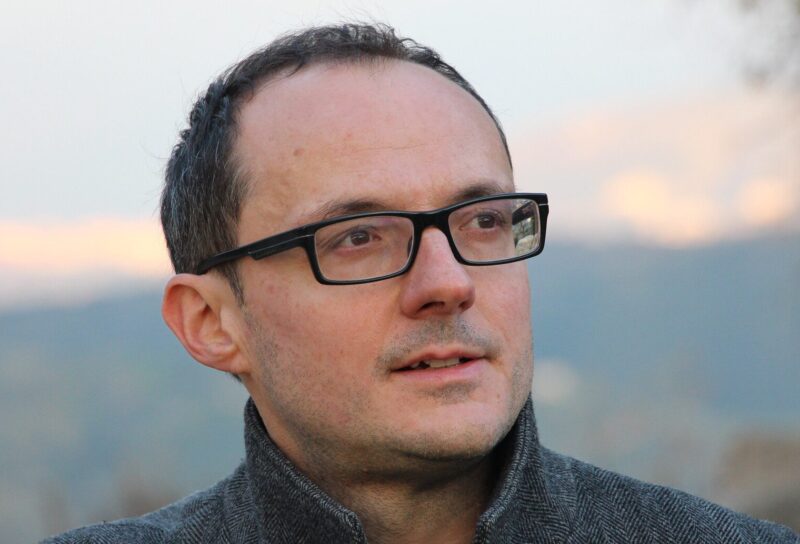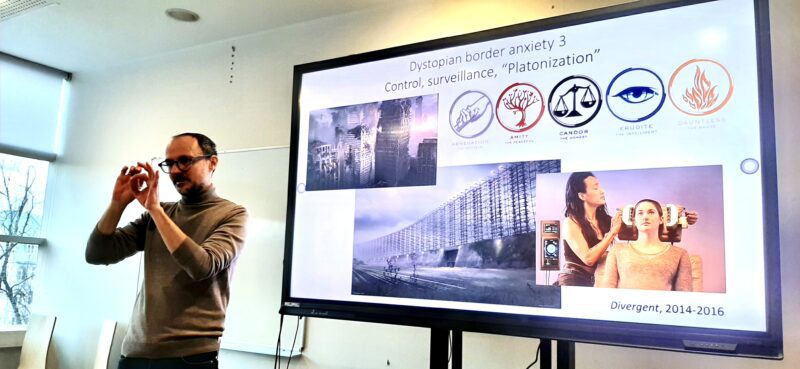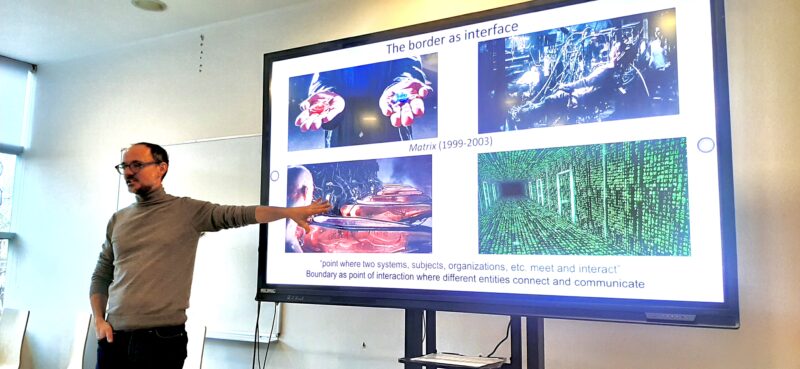
Prof. Daniele Monticelli, from Tallinn University (TLU) and a member of the Eur-Asian Border Lab TLU team, spoke on the topic “Where Do We Wish to Belong? Border(ing) in Contemporary Dystopian Imagery” at a seminar at TLU on 12 December 2024.
Witnessing his kids watching the Netflix apocalyptic and dystopian films – and being drawn to familiarizing with the films’ content – Monticelli discerned how the borders in the depiction of dystopian scenarios have a pervasive presence. Borders protect the surviving people from Zombies or other harms and evils. Humans take to gated communities to survive or sustain their lifestyles. Borders serve as interfaces, often between the different worlds. However, just like hardening physical borders in the contemporary world, the borders in the dystopian scenarios in popular culture often fail in keeping the Zombies, harms and evils out.
Prof. Monticelli argues that the analysis of border(ing) in the contemporary dystopian imagery provides valuable insights into the expectations and anxieties provoked by the resurgence of hard borders in contemporary life and imagination. Such imagery powerfully resonates with the hardening of borders in the contemporary world, whereby the new walls and ‘smart’ borders are less functional defenses against external threats and more theatrical spectacles designed to mask internal insecurities and divisions.
In this preliminary research, Prof. Monticelli identified three types of dystopian border anxieties – the delusive security through walls, (failures of) securitization through gated communities and control/surveillance whereby the contemporary algorithmic bordering leads to various sinister scenarios of control society.
 |
 |
 |